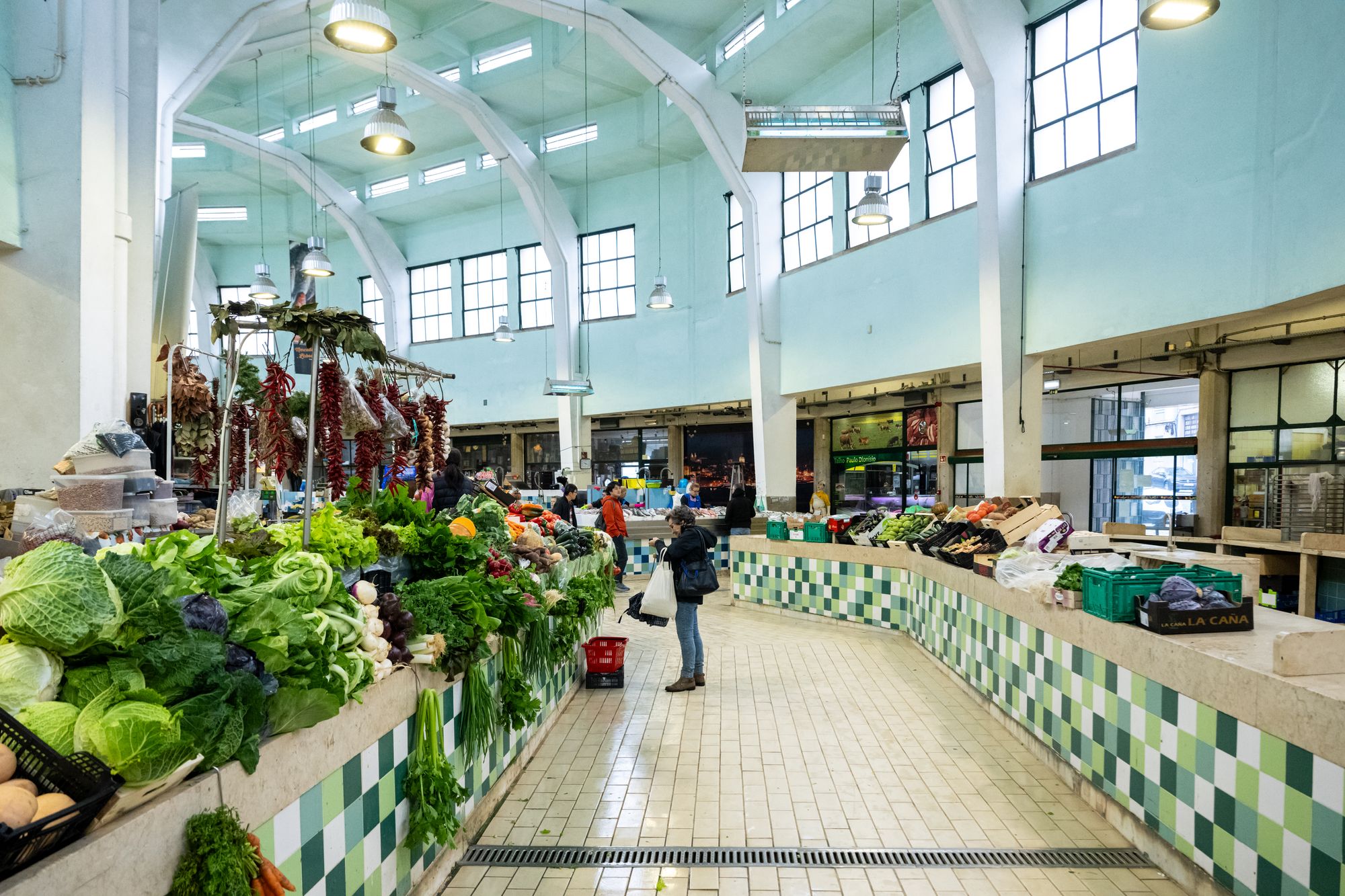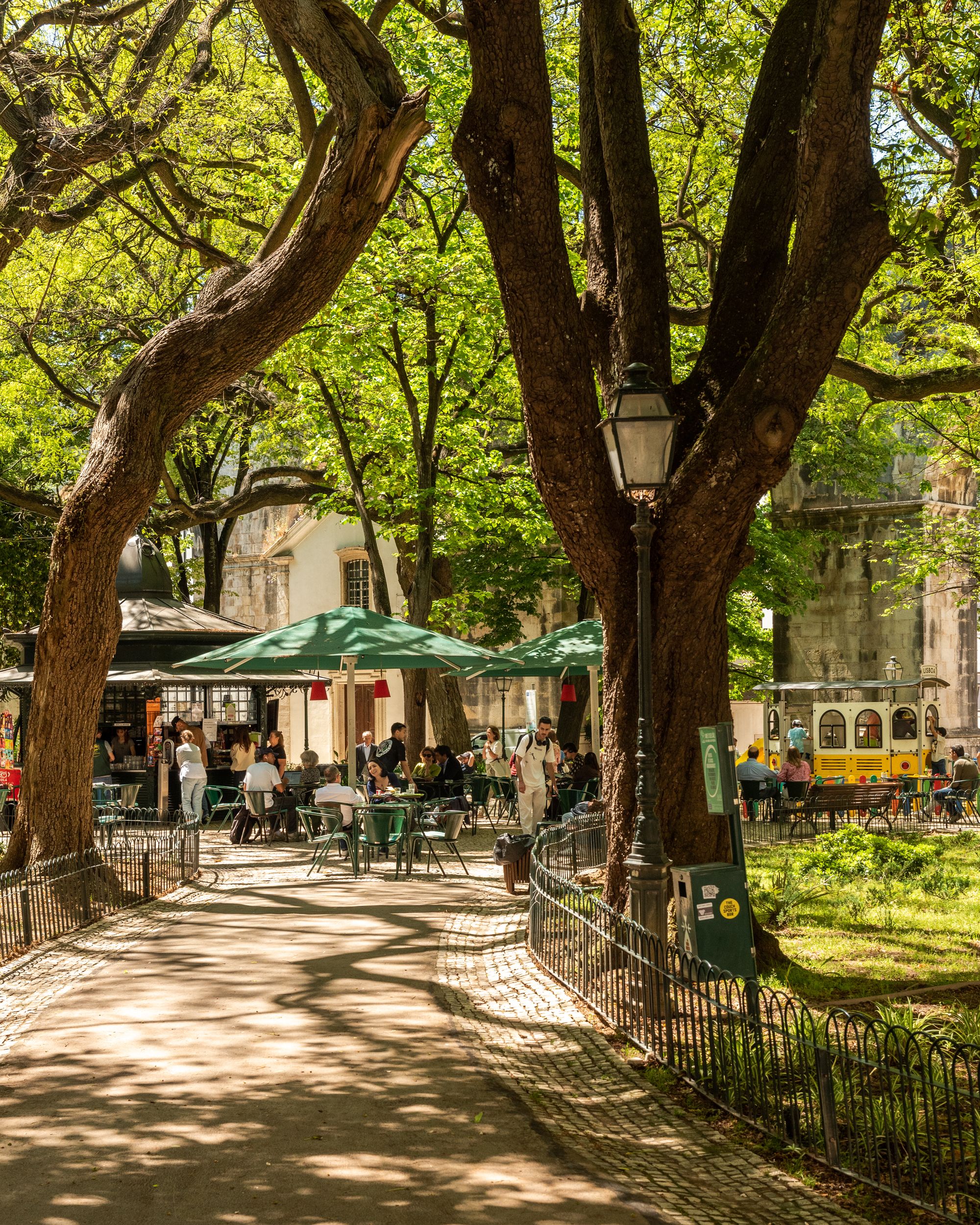Standing shoulder-to-shoulder on the number 28 tram, jostling for space at a Pink Street bar, posing in front of Alfama’s azulejo tiled facades – hands up who succumbed to these Lisbon cliches on their first visit? Yet you don’t have to venture far beyond the city’spostcard panoramas and TikTok-fuelled queues to discover neighbourhoods where Lisboetas still live, work and play unhampered by sightseers. These surprisingly central enclaves reveal a more varied, nuanced portrait of Lisbon, whether it’s the daily ritual of slurping uma bica (espresso) at kerbside quiosques (traditional in-the-round snack-bars) …
Standing shoulder-to-shoulder on the number 28 tram, jostling for space at a Pink Street bar, posing in front of Alfama’s azulejo tiled facades – hands up who succumbed to these Lisbon cliches on their first visit? Yet you don’t have to venture far beyond the city’spostcard panoramas and TikTok-fuelled queues to discover neighbourhoods where Lisboetas still live, work and play unhampered by sightseers. These surprisingly central enclaves reveal a more varied, nuanced portrait of Lisbon, whether it’s the daily ritual of slurping uma bica (espresso) at kerbside quiosques (traditional in-the-round snack-bars) or sampling cuisine from diaspora communities. Here are three districts worth a closer look – and where to hang out in each of them.
.jpg)
Museu ds Água in the Amoreiras district is housed in a beautiful underground building (Museu da Água, Hugo David, 2020)
**Read more: **The best hotels in Lisbon
**Arroios **
The vibe:* Multicultural cuisine meets hipster hangouts *
Had your fill of sardines and pastel de nata? Head to Arroios, one of the city’s most ethnically diverse neighbourhoods with a dining scene to match. From Nepali dumplings at Annapurna Anjos, and Addis Restaurante’s Eritrean flatbreads, to Peruvian snacks at Las Cholas, immigrant communities are cooking up a storm in this working class stronghold. Springing up rapidly in the early 20th century, the neighbourhood’s Art Deco and modernist apartment blocks spread from the grand avenues of Almirante Reis uphill towards Graça.
Arroios won’t be everyone’s cup of matcha, but a younger, creative crowd relish its raw energy and ramshackle looks – not to mention the relatively low rents in a city suffering from Airbnb-ification. Nowhere else in Lisbon will you find such a strong lineup of secondhand bookshops (Greta, for instance, specialises in feminist reads) and indie coffee shops (Malabarista, Thank You Mama and Brick all have winning flat whites and laptop-friendly areas). Even bar crawls are of a cooler breed around here, hopping between dinky natural wine spots O Pif and Rude, craft beer taprooms Sputnik and Dois Corvos, and perhaps even a draft mead at O Covil, fuelled by Dallas Lisboa’s superlative burgers.
Another local nightlife institution is Casa Independente, a crumbling 19th-century mansion turned live music, art space and courtyard bar. Mercado de Arroios, meanwhile, is the neighbourhood in microcosm: world-class vinyl record dealers and ceramicists sell their wares alongside artisan bakers (Terrapão) and a restaurant by Syrian refugees (Mezze), surrounded by eye-poppingly vibrant pavement murals.
Where to stay
With installations by Portuguese street artists and an Asian fusion restaurant show, 1908 Lisboa Hotel (rooms from £148) is in sync with Arroios’ eclectic, arty spirit. The restoration of this long-derelict Art Nouveau building – formerly market hall, then lottery store – into a boutique hotel makes it something of a totem for the area’s renewal. Original wrought-iron balconies and ornate windows overlook the lively Largo do Intendente square, with a metro station steps away.
**Read more: **Affordable places to stay in Lisbon 2025
Mercado de Arroios is where locals shop in the neighbourhood (Ana Luísa Alvim/CML)
Amoreiras
***The vibe: ***Stealth wealth, with a silken past
‘Amoreiras’ means mulberry tree in Portuguese, and some soaring specimens provide welcome summer shade in Jardim das Amoreiras – the beating heart of this quietly chic quarter. Residents gather at the park’s bottle-green quiosque for coffee or cervezas, depending on the hour, many of them from the old-money families who’ve long dwelled in this district’s pretty, pastel mansion blocks. Follow in their well-heeled footsteps by browsing high-end antiques at Farnesina, working out at chic Pilates studio The Reformer Lab and tucking into Arkhe’s plant-based tasting menu, followed by clandestine cocktails in Procopio (find the unmarked red door and ring the bell).
Before becoming a bourgeois bolthole, this neighbourhood bloomed around silk weaving, hence the need for planting those mulberries. The factory is now a museum dedicated to artist couple Maria Helena Vieira da Silva and Árpád Szenes Árpád, unsung abstract expressionists who were contemporaries of Picasso et al. Likewise, the subterranean chambers of Mãe d’Água das Amoreiras water reservoir have found a fresh lease of life as an ambient concert venue – the 18th-century aqueduct soaring above the terracotta rooftops hints at what lies beneath.
North of the leafy square, Amoreiras Shopping Center is where Lisboetas head for retail therapy from big-name brands. Even if malls aren’t your thing, its 360-degree rooftop viewpoint offers an uncrowded alternative to the city’s popular miradouros.
Where to stay
An art-filled corner townhouse with just 15 spacious rooms, Sublime Lisboa (rooms from £203) provides a suitably elegant pied-a-terre. Its all-white exterior gives little hint of the punchily patterned wallpapers, jewel-toned textiles and curio-stuffed shelves within. Glamorous ground-floor Italian brasserie Davvero, which snared its head chef from the Cipriani group, has pulled off the meanest of feats: becoming a hotel restaurant that discerning locals frequent.
**Read more: **Top luxury hotels in Lisbon
Jardim das Amoreiras is a popular gathering place for locals (Carlos Morais da Silva/CML)
Ajuda
The vibe: History without the hordes
With Monsanto Forest at its back and Belém’s Unesco-listed monuments below, Ajuda is a tranquil – and affordable – eyrie that has so far escaped the digital nomads’ notice. Instead of Instagrammable small plates, fill your boots at proper neighbourhood tascas like Andorinhas and O Caçador, where hearty dishes (think: creamed salt-cod dish Bacalhau com natas; tomatoey ‘naughty’ rice) are typically followed by a ginjinha (cherry liqueur) digestif.
Behind Ajuda’s unpretentious, village-like atmosphere, this quarter boasts regal roots: the Palácio Nacional da Ajuda was built to house the royal family following Lisbon’s devastating 1755 earthquake. Inside this neoclassic pile, a series of silk-swathed State Rooms is open to visitors, while the west wing’s National Treasure Museum exhibits some serious bling, including the Portuguese crown jewels. Brazilian gold nuggets, silver tea services and jewel-encrusted robes remind of Portugal’s era as a colonial superpower.
Just across the street lies Lisbon’s oldest botanical garden, Jardim Botânico da Ajuda, a terraced oasis where peacocks roam among exotic palms and views sweep across the River Tagus. Though all this certainly feels far from the madding crowd, the 729 bus whizzes down to Belem waterfront in just seven minutes.
Where to stay
Opposite the Memória Church on Ajuda’s south side, Wine & Books Hotel (rooms from £165) lives up to its promising name with vintage tomes and typewriters displayed in the bar, and a drinks list exclusively featuring Portuguese vineyards – best enjoyed on the* *suntrap roof terrace at sunset. Bonus points for the sleek spa and pet-friendly ethos.
**Read more: **Our pick of where to stay in Lisbon’s city centre

